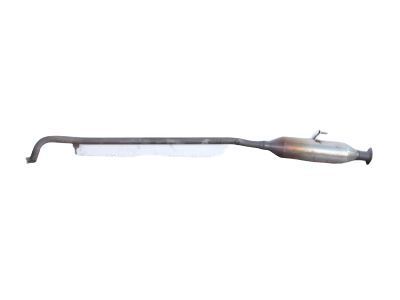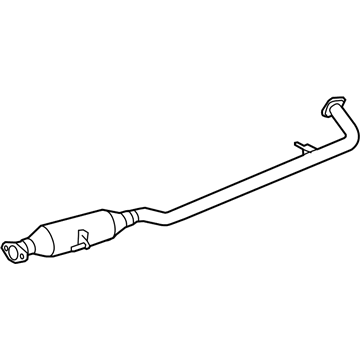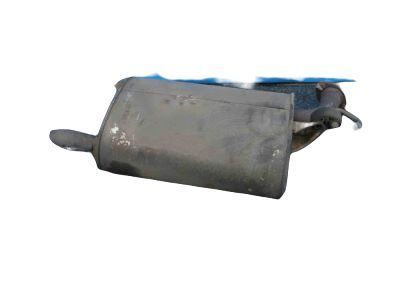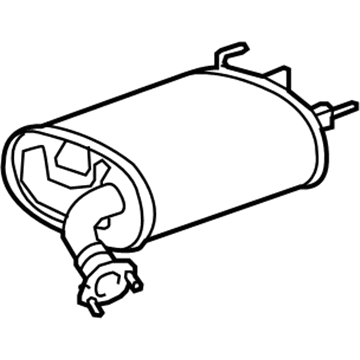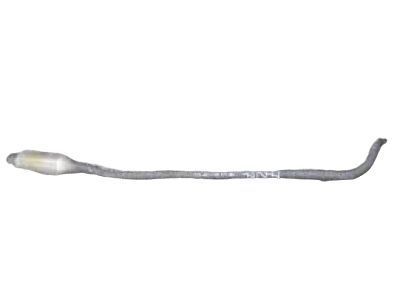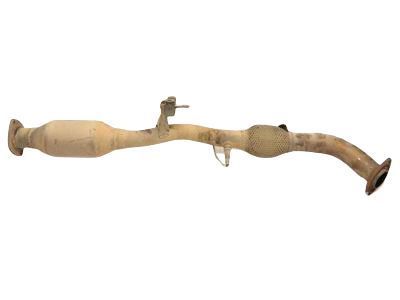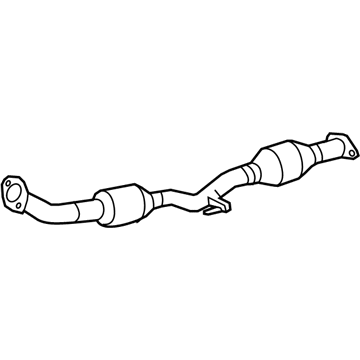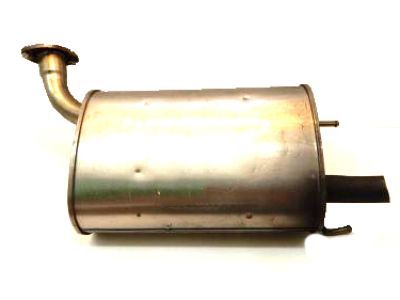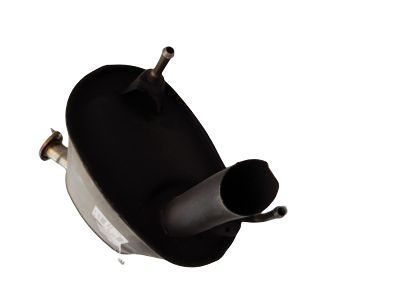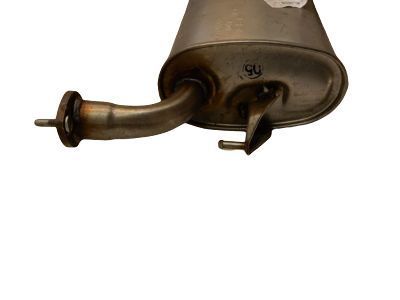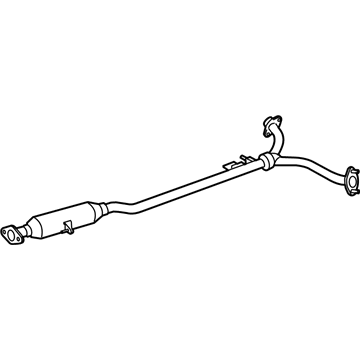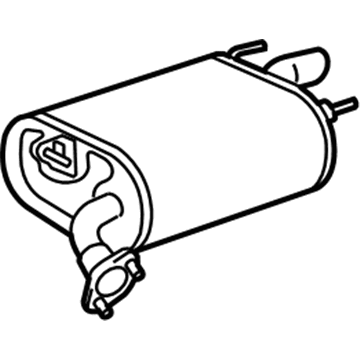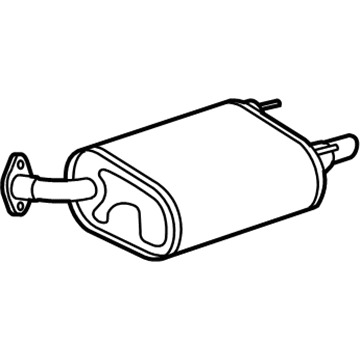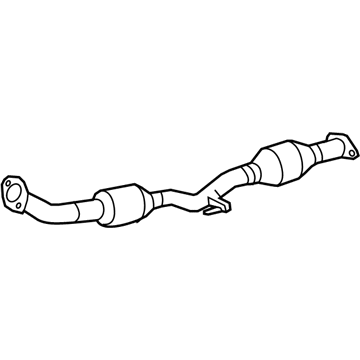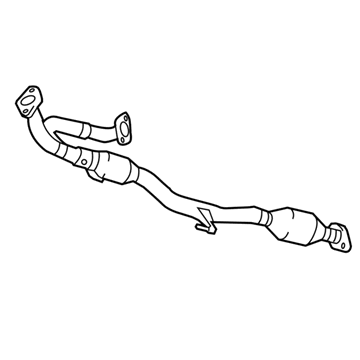×
ToyotaParts- Hello
- Login or Register
- Quick Links
- Live Chat
- Track Order
- Parts Availability
- RMA
- Help Center
- Contact Us
- Shop for
- Toyota Parts
- Scion Parts
My Garage
My Account
Cart
OEM 2007 Toyota Camry Exhaust Pipe
Exhaust Tail Pipe- Select Vehicle by Model
- Select Vehicle by VIN
Select Vehicle by Model
orMake
Model
Year
Select Vehicle by VIN
For the most accurate results, select vehicle by your VIN (Vehicle Identification Number).
20 Exhaust Pipes found

2007 Toyota Camry Intermed Pipe, Center
Part Number: 17420-0V060$198.15 MSRP: $259.13You Save: $60.98 (24%)Ships in 1-3 Business DaysProduct Specifications- Other Name: Pipe Assembly, Exhaust; Exhaust Intermediate Pipe; Direct-Fit Exhaust; Exhaust System Kit; Exhaust Pipe; Center Pipe; Pipe Assembly, Exhaust, Center
- Position: Center
- Replaces: 17420-0H130
- Part Name Code: 17420
- Item Weight: 16.00 Pounds
- Item Dimensions: 50.9 x 19.6 x 9.1 inches
- Condition: New
- Fitment Type: Direct Replacement
- SKU: 17420-0V060
- Warranty: This genuine part is guaranteed by Toyota's factory warranty.

2007 Toyota Camry Rear Muffler
Part Number: 17430-28710$352.07 MSRP: $472.57You Save: $120.50 (26%)Ships in 1-3 Business DaysProduct Specifications- Other Name: Pipe Assembly, Exhaust Tail; Exhaust Muffler; Exhaust Muffler Assembly; Direct-Fit Exhaust; Exhaust System Kit; Muffler; Pipe Assembly, Exhaust, Tail
- Part Name Code: 17430
- Item Weight: 10.90 Pounds
- Item Dimensions: 44.4 x 12.3 x 8.9 inches
- Condition: New
- Fitment Type: Direct Replacement
- SKU: 17430-28710
- Warranty: This genuine part is guaranteed by Toyota's factory warranty.

2007 Toyota Camry Intermed Pipe, Center
Part Number: 17420-28470$340.40 MSRP: $445.14You Save: $104.74 (24%)Ships in 1-3 Business DaysProduct Specifications- Other Name: Pipe Assembly, Exhaust; Exhaust Intermediate Pipe; Exhaust Pipe; Center Pipe; Pipe Assembly, Exhaust, Center
- Position: Center
- Part Name Code: 17420
- Item Weight: 17.20 Pounds
- Item Dimensions: 51.9 x 19.8 x 9.3 inches
- Condition: New
- Fitment Type: Direct Replacement
- SKU: 17420-28470
- Warranty: This genuine part is guaranteed by Toyota's factory warranty.

2007 Toyota Camry Front Pipe
Part Number: 17410-28560$1583.54 MSRP: $2125.57You Save: $542.03 (26%)Ships in 1-3 Business DaysProduct Specifications- Other Name: Pipe Assembly, Exhaust; Catalytic Converter; Exhaust Pipe; Pipe Assembly, Exhaust, Front
- Manufacturer Note: CALIFORNIA SPEC
- Position: Front
- Part Name Code: 17410
- Item Weight: 11.60 Pounds
- Item Dimensions: 47.7 x 18.0 x 9.4 inches
- Condition: New
- Fitment Type: Direct Replacement
- SKU: 17410-28560
- Warranty: This genuine part is guaranteed by Toyota's factory warranty.
 Product Specifications
Product Specifications- Other Name: Pipe Assembly, Exhaust Tail; Exhaust Muffler; Exhaust Muffler Assembly; Direct-Fit Exhaust; Exhaust System Kit; Muffler; Pipe Assembly, Exhaust, Tail
- Part Name Code: 17430
- Item Weight: 10.70 Pounds
- Item Dimensions: 44.4 x 12.8 x 8.8 inches
- Condition: New
- Fitment Type: Direct Replacement
- SKU: 17430-0H160
- Warranty: This genuine part is guaranteed by Toyota's factory warranty.
2007 Toyota Camry Intermed Pipe, Center
Part Number: 17420-0P021$357.85 MSRP: $480.35You Save: $122.50 (26%)Ships in 1-3 Business DaysProduct Specifications- Other Name: Pipe Assembly, Exhaust; Exhaust Intermediate Pipe; Exhaust Pipe; Center Pipe; Pipe Assembly, Exhaust, Center
- Position: Center
- Replaces: 17420-0P020
- Part Name Code: 17420
- Item Weight: 21.60 Pounds
- Item Dimensions: 97.7 x 26.3 x 7.1 inches
- Condition: New
- Fitment Type: Direct Replacement
- SKU: 17420-0P021
- Warranty: This genuine part is guaranteed by Toyota's factory warranty.
2007 Toyota Camry Rear Muffler, Passenger Side
Part Number: 17430-31471$348.21 MSRP: $455.36You Save: $107.15 (24%)Ships in 1-3 Business DaysProduct Specifications- Other Name: Pipe Assembly, Exhaust Tail; Exhaust Muffler, Right; Muffler; Pipe Assembly, Exhaust, Tail
- Position: Passenger Side
- Replaces: 17430-31470
- Part Name Code: 17430
- Item Weight: 10.30 Pounds
- Item Dimensions: 44.9 x 12.6 x 9.0 inches
- Condition: New
- Fitment Type: Direct Replacement
- SKU: 17430-31471
- Warranty: This genuine part is guaranteed by Toyota's factory warranty.
2007 Toyota Camry Rear Muffler, Passenger Side
Part Number: 17430-0P061$340.87 MSRP: $445.76You Save: $104.89 (24%)Ships in 1-3 Business DaysProduct Specifications- Other Name: Pipe Assembly, Exhaust Tail; Exhaust Muffler, Right; Exhaust Muffler Assembly; Muffler; Pipe Assembly, Exhaust, Tail
- Position: Passenger Side
- Replaces: 17430-0P062, 17430-0P060
- Part Name Code: 17430
- Item Weight: 10.40 Pounds
- Item Dimensions: 42.8 x 12.6 x 9.1 inches
- Condition: New
- Fitment Type: Direct Replacement
- SKU: 17430-0P061
- Warranty: This genuine part is guaranteed by Toyota's factory warranty.
2007 Toyota Camry Pipe Assembly, Exhaust
Part Number: 17420-31450$330.38 MSRP: $432.05You Save: $101.67 (24%)Ships in 1-3 Business DaysProduct Specifications- Other Name: PIPE ASSY, EXHAUST; Exhaust Pipe
- Replaces: 17420-31091, 17420-31090
- Item Dimensions: 110.3 x 25.2 x 12.7 inches
- Condition: New
- SKU: 17420-31450
- Warranty: This genuine part is guaranteed by Toyota's factory warranty.
2007 Toyota Camry Rear Muffler, Driver Side
Part Number: 17440-31011$318.50 MSRP: $454.74You Save: $136.24 (30%)Ships in 1-3 Business DaysProduct Specifications- Other Name: Pipe Assembly, Exhaust Tail; Exhaust Muffler, Left; Muffler; Pipe, Exhaust Tail, Driver Side
- Position: Driver Side
- Replaces: 17440-31010
- Part Name Code: 17440
- Item Weight: 28.50 Pounds
- Item Dimensions: 30.9 x 25.2 x 9.2 inches
- Condition: New
- Fitment Type: Direct Replacement
- SKU: 17440-31011
- Warranty: This genuine part is guaranteed by Toyota's factory warranty.
2007 Toyota Camry Rear Muffler, Driver Side
Part Number: 17440-0P021$318.50 MSRP: $454.74You Save: $136.24 (30%)Ships in 1-3 Business DaysProduct Specifications- Other Name: Pipe Assembly, Exhaust Tail; Exhaust Muffler, Left; Exhaust Muffler Assembly; Muffler; Pipe, Exhaust Tail, Driver Side
- Position: Driver Side
- Replaces: 17440-0P020
- Part Name Code: 17440
- Item Weight: 28.00 Pounds
- Item Dimensions: 30.6 x 25.5 x 9.4 inches
- Condition: New
- Fitment Type: Direct Replacement
- SKU: 17440-0P021
- Warranty: This genuine part is guaranteed by Toyota's factory warranty.
2007 Toyota Camry Rear Muffler
Part Number: 17430-28720$399.05 MSRP: $535.65You Save: $136.60 (26%)Ships in 1-3 Business DaysProduct Specifications- Other Name: Pipe Assembly, Exhaust Tail; Exhaust Muffler; Exhaust Muffler Assembly; Muffler; Pipe Assembly, Exhaust, Tail
- Part Name Code: 17430
- Item Weight: 11.00 Pounds
- Item Dimensions: 43.6 x 12.5 x 8.9 inches
- Condition: New
- Fitment Type: Direct Replacement
- SKU: 17430-28720
- Warranty: This genuine part is guaranteed by Toyota's factory warranty.
2007 Toyota Camry Front Pipe
Part Number: 17410-0H190$1583.54 MSRP: $2125.57You Save: $542.03 (26%)Ships in 1-3 Business DaysProduct Specifications- Other Name: Pipe Assembly, Exhaust; Catalytic Converter; Exhaust Pipe; Pipe Assembly, Exhaust, Front
- Manufacturer Note: CALIFORNIA SPEC
- Position: Front
- Part Name Code: 17410
- Item Weight: 9.20 Pounds
- Item Dimensions: 33.6 x 5.2 x 17.9 inches
- Condition: New
- Fitment Type: Direct Replacement
- SKU: 17410-0H190
- Warranty: This genuine part is guaranteed by Toyota's factory warranty.
2007 Toyota Camry Front Pipe
Part Number: 17410-28570$1395.81 MSRP: $1873.59You Save: $477.78 (26%)Ships in 1-3 Business DaysProduct Specifications- Other Name: Pipe Assembly, Exhaust; Catalytic Converter; Exhaust Pipe; Pipe Assembly, Exhaust, Front
- Position: Front
- Part Name Code: 17410
- Item Weight: 11.20 Pounds
- Item Dimensions: 48.2 x 18.2 x 9.3 inches
- Condition: New
- Fitment Type: Direct Replacement
- SKU: 17410-28570
- Warranty: This genuine part is guaranteed by Toyota's factory warranty.
2007 Toyota Camry Front Pipe
Part Number: 17410-0H270$1395.81 MSRP: $1873.59You Save: $477.78 (26%)Ships in 1-3 Business DaysProduct Specifications- Other Name: Pipe Assembly, Exhaust; Catalytic Converter; Exhaust Pipe; Pipe Assembly, Exhaust, Front
- Position: Front
- Part Name Code: 17410
- Item Weight: 11.80 Pounds
- Item Dimensions: 48.6 x 18.0 x 9.1 inches
- Condition: New
- Fitment Type: Direct Replacement
- SKU: 17410-0H270
- Warranty: This genuine part is guaranteed by Toyota's factory warranty.
2007 Toyota Camry Pipe Assembly, Exhaust, Front
Part Number: 17410-31540$1312.96 MSRP: $1762.37You Save: $449.41 (26%)Ships in 1-3 Business DaysProduct Specifications- Other Name: Pipe Assembly, Exhaust; Exhaust Pipe
- Manufacturer Note: *114=TOYOTA/X18/Y
- Position: Front
- Part Name Code: 17410
- Item Weight: 11.20 Pounds
- Item Dimensions: 47.3 x 19.1 x 9.8 inches
- Condition: New
- Fitment Type: Direct Replacement
- SKU: 17410-31540
- Warranty: This genuine part is guaranteed by Toyota's factory warranty.
2007 Toyota Camry Front Pipe
Part Number: 17410-0P100$1193.33 MSRP: $1601.80You Save: $408.47 (26%)Ships in 1-3 Business DaysProduct Specifications- Other Name: Pipe Assembly, Exhaust; Intermediate Pipe, Front; Catalytic Converter, Rear; Crossover Pipe; Pipe Assembly, Exhaust, Front
- Position: Front
- Part Name Code: 17410
- Item Weight: 11.30 Pounds
- Item Dimensions: 48.6 x 18.5 x 9.1 inches
- Condition: New
- Fitment Type: Direct Replacement
- SKU: 17410-0P100
- Warranty: This genuine part is guaranteed by Toyota's factory warranty.
2007 Toyota Camry Front Pipe
Part Number: 17410-0H180$1115.13 MSRP: $1496.83You Save: $381.70 (26%)Ships in 1-3 Business DaysProduct Specifications- Other Name: Pipe Assembly, Exhaust; Catalytic Converter; Exhaust Pipe; Converter & Pipe; Pipe Assembly, Exhaust, Front
- Position: Front
- Part Name Code: 17410
- Item Weight: 11.80 Pounds
- Item Dimensions: 47.7 x 18.4 x 9.5 inches
- Condition: New
- Fitment Type: Direct Replacement
- SKU: 17410-0H180
- Warranty: This genuine part is guaranteed by Toyota's factory warranty.
2007 Toyota Camry Front Pipe
Part Number: 17410-28551$977.00 MSRP: $1311.41You Save: $334.41 (26%)Ships in 1-3 Business DaysProduct Specifications- Other Name: Pipe Assembly, Exhaust; Catalytic Converter; Exhaust Pipe; Pipe Assembly, Exhaust, Front
- Manufacturer Note: *114=TOYOTA/GA5GB5/Y
- Position: Front
- Part Name Code: 17410
- Item Weight: 11.30 Pounds
- Item Dimensions: 48.6 x 18.4 x 9.6 inches
- Condition: New
- Fitment Type: Direct Replacement
- SKU: 17410-28551
- Warranty: This genuine part is guaranteed by Toyota's factory warranty.
2007 Toyota Camry Rear Muffler
Part Number: 17430-0H170$430.95 MSRP: $578.46You Save: $147.51 (26%)Ships in 1-3 Business DaysProduct Specifications- Other Name: Pipe Assembly, Exhaust Tail; Exhaust Muffler; Exhaust Muffler Assembly; Muffler; Pipe Assembly, Exhaust, Tail
- Part Name Code: 17430
- Item Weight: 10.80 Pounds
- Item Dimensions: 43.6 x 12.3 x 8.9 inches
- Condition: New
- Fitment Type: Direct Replacement
- SKU: 17430-0H170
- Warranty: This genuine part is guaranteed by Toyota's factory warranty.
2007 Toyota Camry Exhaust Pipe
Looking for affordable OEM 2007 Toyota Camry Exhaust Pipe? Explore our comprehensive catalogue of genuine 2007 Toyota Camry Exhaust Pipe. All our parts are covered by the manufacturer's warranty. Plus, our straightforward return policy and speedy delivery service ensure an unparalleled shopping experience. We look forward to your visit!
2007 Toyota Camry Exhaust Pipe Parts Q&A
- Q: How to service and repair the exhaust pipe on 2007 Toyota Camry?A: The exhaust pipe service requires starting with tail pipe assembly removal through 2 nuts and then assembly removal before removing the center exhaust pipe gasket. The center exhaust pipe assembly requires detachment of its 2 bolts and 2 nuts before removing the gasket from the front exhaust pipe. Begin by removing 2 nuts from the front exhaust pipe before separating the front exhaust pipe No. 1 support bracket and the assembly that leads to removal of the gasket at the exhaust manifold. Start by unfastening the heated oxygen sensor and both bolts of the rear exhaust pipe No. 1 support bracket. Started with the rear exhaust pipe No. 1 support bracket installation by securing it with 2 bolts at 33 Nm (337 kgf-cm) while preserving bracket directional positioning. You must install the heated oxygen sensor before fitting the front exhaust pipe assembly using new gasket material and matching two nuts at 43 Nm (438 kgf-cm, 32 ft. lbs.) torque value. After that, add two more nuts to the front exhaust pipe No. 1 support bracket at a matching torque value of 33 Nm (337 kgf-cm, 24 ft. lbs.). First install the center exhaust pipe assembly equipped with new gaskets by applying 2 bolts and 2 nuts then tighten them to 43 Nm (438 kgf-cm, 32 ft. lbs.). The tail pipe assembly demands a new gasket followed by 2 nuts with a torque setting of 43 Nm (438 kgf-cm, 32 ft. lbs.). Checking exhaust gas leaks should be conducted after completing installation and any loose areas requiring tightening to stop leaks will need new replacement parts when necessary.
